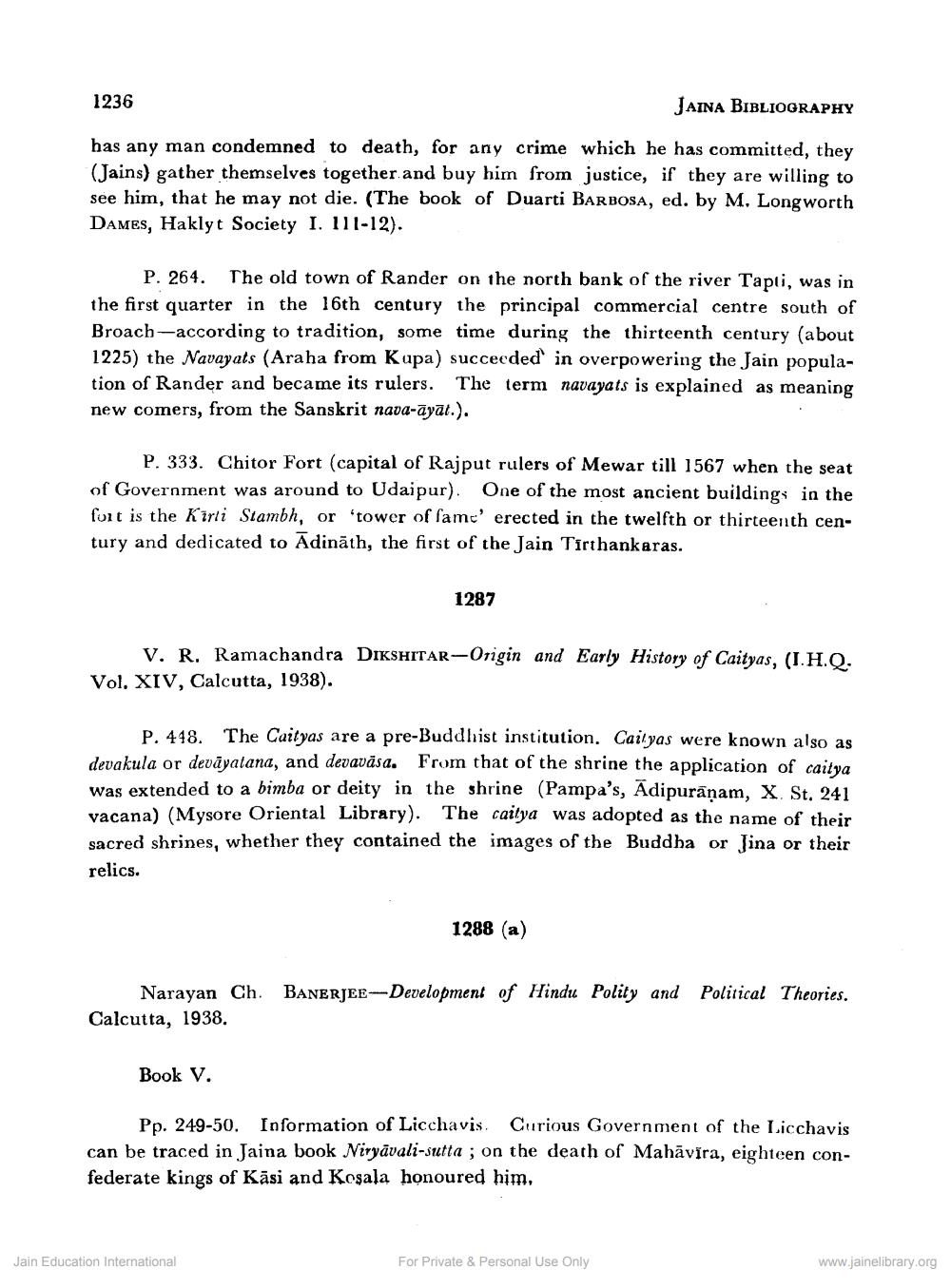________________
1236
JAINA BIBLIOGRAPHY
has any man condemned to death, for any crime which he has committed, they (Jains) gather themselves together and buy him from justice, if they are willing to see him, that he may not die. (The book of Duarti BARBOSA, ed. by M. Longworth Dames, Haklyt Society I. 111-12).
P. 264. The old town of Rander on the north bank of the river Tapti, was in the first quarter in the 16th century the principal commercial centre south of Broach-according to tradition, some time during the thirteenth century (about 1225) the Navayats (Araha from Kupa) succeeded in overpowering the Jain population of Rander and became its rulers. The term navayats is explained as meaning new comers, from the Sanskrit nava-āyat.).
P. 333. Chitor Fort (capital of Rajput rulers of Mewar till 1567 when the seat of Government was around to Udaipur). One of the most ancient buildings in the fort is the Kirli Stambh, or 'tower of fame' erected in the twelfth or thirteenth century and dedicated to Ādināth, the first of the Jain Tirthankaras.
1287
V. R. Ramachandra DIKSHITAR-Origin and Early History of Caityas, (I.H.Q. Vol. XIV, Calcutta, 1938).
P. 448. The Caityas are a pre-Buddhist institution. Cailyas were known also as devakula or devāyatana, and devavāsa. From that of the shrine the application of caitya was extended to a bimba or deity in the shrine (Pampa's, Adipuräņam, X. St. 241 vacana) (Mysore Oriental Library). The caitya was adopted as the name of their sacred shrines, whether they contained the images of the Buddha or Jina or their relics.
1288 (a)
Political Theories.
Narayan Ch.BANERJEE-Development of Hindu Polity and Calcutta, 1938.
Book V.
Pp. 249-50. Information of Licchavis. Curious Government of the Licchavis can be traced in Jaina book Niryāvali-sutta ; on the death of Mahāvira, eighteen confederate kings of Kāsi and Kosala honoured him.
Jain Education International
For Private & Personal Use Only
www.jainelibrary.org




